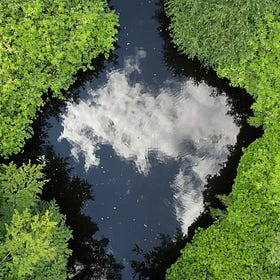LettsSafari's 10 Best Garden Rewilding Practices for Autumn
Autumn Rewilding Tips with Stunning Seasonal Photography from LettsSafari's Capability Brown Gardens
Autumn is the perfect season to start rewilding your garden as nature transitions and prepares for the colder months. Embracing rewilding practices helps create a haven for wildlife, enhances biodiversity, and improves soil health. Get it right now and next spring and summer might surpirse you!
Here are LettsSafari's 10 best rewilding practices for your autumn garden and the theory behind their importance:
1. Leave the Leaves: Instead of raking and removing fallen leaves, leave them where they fall or use them as mulch. Leaves provide vital habitat for insects such as beetles and caterpillars, which form the base of the food chain. As leaves decompose, they release nutrients back into the soil, fostering a healthier and more fertile environment for plant growth.
The Importance of Leaves (Particularly Left to Rot in the Ground)
Nature conservation is at the root of our work at LettsSafari. There are many things we routinely do that can also be accomplished in your backyard to build a wilder, more biodiverse and natural garden. Today we focus on keeping fallen leaves on the ground and in so doing improving the health of the soil, recycling much needed nutrients, supporting inse…
2. Plant Native Trees and Shrubs: Autumn is an ideal time to plant native species that can establish roots over winter. Native plants are adapted to local ecosystems and provide essential food and shelter for wildlife, such as birds and pollinators. Trees like hawthorn and shrubs like dogwood support a diverse range of species, contributing to a balanced ecosystem.
3. Create a Log or Brush Pile: Collect fallen branches and create a log or brush pile in a corner of your garden. These structures mimic natural forest debris, offering critical shelter and hibernation spaces for hedgehogs, insects, and amphibians. The decaying wood also supports fungi and decomposers that help break down organic matter, enriching the soil.
How to Design Your LettsSafari Garden
Safari gardens are the future. A future that embraces rewilding and wildlife gardening - creating places that restore our depleted biodiversity. Spaces that remove carbon and clean the air. Havens for wildlife and nature. Here’s a simple blueprint for designing your very own LettsSafari garden.
4. Sow Wildflower Seeds: Scatter wildflower seeds on bare soil in late autumn to establish a vibrant meadow in the spring. Wildflowers are crucial for attracting pollinators like bees, butterflies, and other beneficial insects. A diverse array of pollinators supports the reproduction of many plant species, maintaining ecological stability.
Creating a Wildflower Area in Your Safari Garden
Many of you will want to add a mini wildflower meadow to your LettsSafari garden. Wild flower and wild grasses remove carbon, attract wildlife, naturally regenerate and look amazing. Plus, it will bring a bit of the ‘wild’ into your life!
5. Build a Pond: Even a small pond can make a significant difference in a garden’s biodiversity. Water bodies attract amphibians such as frogs and newts, which help control pest populations. Birds and insects also rely on ponds for hydration and habitat. Installing a pond in autumn gives it time to settle and become an inviting environment by spring.
The Importance of Water
Large scale rewilders have for the last 30 years highlighted the importance of three major habitats for the creation of an effective biodiverse wilderness - including forest, wild grassland and open scrub. At LettsSafari, having focused on smaller-scale rewilding, we have long argued the importance of a fourth - ‘waterways’.
Keep reading with a 7-day free trial
Subscribe to LettsSafari+ to keep reading this post and get 7 days of free access to the full post archives.







